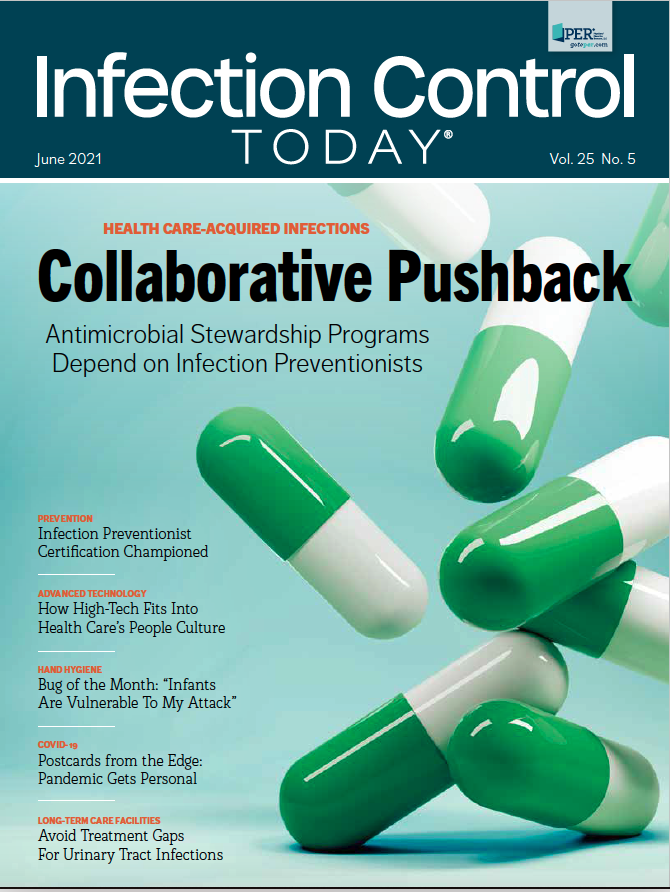Social Distancing Indoors: One Size Does Not Fit All
MIT professors argue that many variables should be included when determining just how much social distancing is needed in different indoor settings.
Not all indoor settings are the same: Ventilation varies, size varies, and occupancy varies. Additionally, the activities people perform indoors also vary widely. Because of this, the 6 ft social distancing protocol, allocated by the Centers for Disease Control and Prevention (CDC) and the World Health Organization (WHO), doesn’t always apply, according to a recent study in the journal Proceedings of the National Academy of Sciences.1
Investigators at Massachusetts Institute of Technology (MIT)—Martin Z. Bazant, PhD, E. G. Roos Professor of Chemical Engineering and a professor of mathematics; and John W. M. Bush, PhD, a professor of applied mathematics—have offered what they hope will be a guide for schools, businesses, policy makers, and individuals to better assess the risk of contracting COVID-19 indoors. They argue that the data suggest that school closings and occupancy limits, for example, may not be necessary in many instances.
John W.M. Bush, PhD

This is not to say that social distancing indoors is not important. It is a valuable safety measure, Bush says in an email to Infection Control Today® (ICT®), as “it protects against large-drop transmission (as arises when one coughs or sneezes) and transmission by respiratory jets (as accompany normal breathing),” Thus, the farther one is from an infected person, the better. (A short Q&A with Bush is below.)
Martin Z. Bazant, PhD,

But social distancing rules should be pliable, the investigators claim. Sometimes you’ll need more, and sometimes fewer will do. Wearing masks reduces the risk of short-range respiratory flows, Bush says, and the greater danger indoors may arise from airborne transmission. When people wear masks, the social distancing guidelines may be overly restrictive, he continues. On the other hand, sometimes they may not be restrictive enough.
In an MIT press release,2 Bush offered an example from his own experience. “My mother is over 90 and lives in an elder care facility. Our model makes it clear that it’s useful to wear a mask and open a window—this is what you have in your control.”
Bush said his mother felt safe attending an exercise class at the facility because the participants would be 6 ft apart. However, the size of the exercise room and number of participants would actually make that a high-risk activity.
In the same press release, Bazant said, “I’d like to use this work to establish the science of airborne transmission specifically for COVID-19, by just taking into account all factors, the available data, and the distribution of droplets for different kinds of activities.”
Bazant tells ICT® in an email exchange that it’s important to “note some more of the practical applications of our work. Our safety guideline may be applied to different indoor spaces using a user-friendly online app, which has been translated into many languages. The safety guideline can also be expressed as a limit on the exhaled carbon dioxide concentration, a convenient proxy for indoor airborne transmission risk, which can be monitored in real time using low-cost sensors.”
Bush and Bazant gathered data using an app and website developed by Kasim Khan, of the Robert Frederick Smith School of Chemical and Biomolecular Engineering at Cornell University, on which specific details of what’s going on in an indoor setting are entered, including the variables mentioned above. Then they estimated how long it would take under the various circumstances for the virus to spread from 1 person infected with COVID-19.
According to Bush, the study “indicates that one should limit the time spent in an indoor space, to an extent determined by the parameters defining the space, including the number of occupants, the ventilation and filtration rates, the level of human activity, and mask use.”
That last, mask use, could be the most important variable.
“In such circumstances (when masks are worn), it is possible that the social distancing guidelines are overly restrictive, Bush says. “However, it is also possible that they are not restrictive enough. Our study allows one to make a quantitative assessment of which settings are safe and which are not, and when the social distancing guidelines are sufficient or inadequate.”
The investigators used real-world events in their study, such as the Skagit Valley Chorale incident in Washington state. During a 2-hour choir practice, 86% of the participants were infected with SARS-CoV-2.
“Similarly, when 23 of 68 passengers were infected on a 2-hour bus journey in Ningbo, China, their seated locations were uncorrelated with distance to the index case,” the study authors state. “Airborne transmission was also implicated in the COVID-19 outbreak between residents of a Korean high-rise building whose apartments were linked via air ducts. Studies have also confirmed the presence of infectious SARS-CoV-2 virions in respiratory aerosols suspended in air samples collected at distances as large as 16 ft from infected patients in a hospital room.”
References
- Bazant MZ, Bush JWM. A guideline to limit indoor airborne transmission of COVID-19. PNAS. 2021;118(17):e2018995118. doi:10.1073/pnas.2018995118
- Chandler DL. A method to assess Covid-19 transmission risks in indoor settings. MIT News. April 15, 2021. Accessed April 22, 2021. https://news.mit.edu/2021/covid-19-risks-indoor-0415
Q&A: A Conversation With John W. M. Bush, PhD
In a recent email exchange with Infection Control Today® (ICT®), John W. M. Bush, PhD, coauthor of a study questioning present protocols on indoor social distancing, put the findings of the study into perspective. Bush, who teaches applied mathematics at Massachusetts Institute of Technology, underscored his belief that social distancing can stem the tide of infection, but that different circumstances require different approaches.
ICT®: Some people have interpreted your findings as more or less saying there’s a good chance that the 6-foot guidance is not only irrelevant, but may have led to unnecessary school and business closings. Is that a fair assumption?
Bush: No. Social distancing is a valuable safety measure in that it protects against large-drop transmission (as arises when one coughs or sneezes) and transmission by respiratory jets (as accompany normal breathing). The pathogen concentration of such exhaled air decreases with distance; thus, as far as infection by these respiratory flows is concerned, the farther you are
John W. M. Bush, PhD

away from an infected person, the better. Our study concerns specifically airborne transmission, as arises from the inhalation of pathogen-bearing aerosol (micron-scale) droplets exhaled by an infected person then mixed throughout the indoor space by ambient flows. Because everyone in such a well-mixed space is effectively breathing the same air, they are all at equal risk of airborne transmission, regardless of their location. For airborne transmission, social distancing in indoor spaces is not enough and may provide a false sense of security. Our study proposes a new safety guideline for limiting such indoor airborne transmission. Specifically, it indicates that one should limit the time spent in an indoor space, to an extent determined by the parameters defining the space, including the number of occupants, the ventilation and filtration rates, the level of human activity, and mask use. Our study highlights that efficient mask use provides an extremely effective means of limiting indoor transmission of COVID-19. Provided masks are worn, so that the risk of short-range respiratory flows is greatly reduced, the greatest danger indoors may be posed by airborne transmission. In such circumstances (when masks are worn), it is possible that the social distancing guidelines are overly restrictive; however, it is also possible that they are not restrictive enough. Our study allows one to make a quantitative assessment of which settings are safe and which are not, and when the social distancing guidelines are sufficient or inadequate. What’s the most important variable in an indoor setting when it comes to deciding what social distance would be appropriate? Concerning specifically airborne transmission, the distance between occupants is not the factor that determines safety; rather, it is the time spent in the shared space. The time limit we deduce depends on the number of occupants, the room’s ventilation rate, and most strongly on mask use.
ICT®: What led you to conduct the study in the first place?
Bush: The realization that in an indoor space one is not safe at 6 ft from an infected person, owing to the risk of airborne transmission (this was clear from work I did previously on the flows accompanying coughing and sneezing events). Given that the social distancing guidelines such as the 6 ft rule simply impose a minimum distance, it was clear that a new guideline was necessary to limit airborne transmission.
ICT®: With vaccinations ramping up, do you see a point where social distancing won’t really matter anymore?
Bush: Indeed, the risk of indoor transmission will decrease as the population develops immunity (by either vaccination or prior infection). Eventually, we will presumably be in a position to relax some of the safety guidelines.
ICT®: Is there anything else you would like to add?
Bush: As indicated in our paper, masks are an extremely efficient means of mitigating indoor transmission, in that they mitigate both short-range transmission from respiratory flows and long-range airborne transmission. Ventilation is the next best precaution.

Robust infectious disease surveillance, including rapid subtyping of influenza A, is essential for early detection, containment, and public health reporting of novel viral threats.
Robust infectious disease surveillance, including rapid subtyping of influenza A, is essential for early detection, containment, and public health reporting of novel viral threats.
2 Commerce Drive
Cranbury, NJ 08512